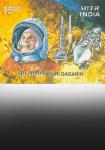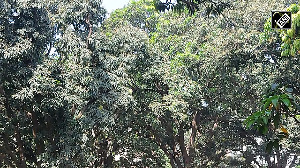The opening up of India's economy, and similar developments abroad, provide increasing scope for India to trade its way out of poverty. The World Trade Organisation's (WTO's) Doha Development Agenda offers an opportunity for India to accelerate that process -- and, in doing so, to reduce poverty not just at home but also in other developing countries.
A new study using the World Bank's model of the global economy suggests global economic welfare could be enhanced by $290 billion per year by 2015 if all merchandise trade barriers and agricultural subsidies were removed. It would be even greater if services trade was opened up, especially for temporary movement of labour.
Agricultural distortions are responsible for nearly two-thirds of the potential benefit. And of those agricultural gains, 93 per cent would come from removing import restrictions and only 7 per cent from cutting domestic and export subsidies. So even though policies affecting this sector are politically sensitive, they are simply too important to be sidelined in the Doha trade negotiations.
The G-20, together with low-income countries and many development NGOs, have been placing most of its emphasis in the Doha debate on cutting trade-distorting farm subsidies rather than tariffs.
That position is understandable for agricultural-exporting developing countries currently receiving preferential access into high-priced rich-country markets, as they may suffer preference erosion when further tariff cuts open up those markets.
Also, net food-importing developing countries know multilateral tariff cuts will raise the price of their food imports.
India, however, is in neither of those positions. It is a net exporter of food; and it receives relatively few trade preferences, being neither an African, Caribbean and Pacific (ACP) country nor a less developed county (LDC).
Our modeling results for a Doha multilateral trade agreement that freed up trade in both farm and non-agricultural goods confirm that India is likely to gain disproportionately: one-third as much above the average for low-income countries, and twice the middle-income average, if developing countries fully participate in the round.
Importantly, with cuts not just to farm subsidies but also to import restrictions, agricultural output and incomes would be greater under such a Doha agreement in both India and in developing countries as a group.
Nor would India's food security be compromised by such reform. According to our results, India has almost the same net trade position (exports minus imports) in both food and other agricultural products under the Doha scenario as in the baseline. Indeed, the share of its agricultural production exported would be up by one-tenth, from 3.0 to 3.3 per cent.
To generate these outcomes, India first needs to show more willingness to open up its markets in both agricultural and manufacturing. Rather than adopt a defensive position with respect to its own import barriers, its trading partners need to see that if they were to open up more, India would reciprocate in kind.
Second, India needs to take more of a lead in the G-20 in encouraging that group as a whole to be more forthright. To date, the G-20 has made a strong case for cuts in agricultural subsidies under Doha. That is commendable and justified, but it is not enough.
The Group has to recognise that most of the benefits from farm trade reform will be realised only if agricultural tariffs are also cut. For India especially, cuts in tariffs on manufactures are essential too, given its growing comparative advantage in non-farm goods.
And in both farm and non-farm goods, the gains require developing countries themselves to participate in the reforms because such a high proportion of their trade is South-South these days, not just South-North.
That is true for India as well: we estimate that half its economic gains from freeing world trade would come from the trade reform of the developing country group.
As it happens, cutting tariff bindings would not require much of a cut in India's applied tariffs on farm products. Because of the large gap between its bound and applied rates, its applied rate would fall only by one-eleventh in a Doha agreement that cut the global average by one-third. Hence, this is something India can offer at little political cost.
Third, WTO members agreed last July that developing countries would be given special and differential treatment (SDT) in the form of not having to cut their tariffs as far or as fast as high-income countries. That is not in the economic interests of India or other countries though.
According to our modeling results, India's gains from Doha could be increased by a massive 60 per cent if developing countries were to forego that SDT right and cut their bound tariffs as much as rich countries. But that is not all. Were developing countries to make that offer, they would be in a much-strengthened position to request bigger reforms by developed countries and more foreign aid for trade-related development investments.
Yet India would have to lower its average applied tariff on all goods by only another one-seventh under such an arrangement, from 23 to 20 per cent. That would generate relatively little political pain for such a major gain to India, and to developing countries as a group.
This note draws on a programme of World Bank research on the implications of the WTO's Doha trade negotiations for developing countries. The authors are grateful for the collaboration of all their co-contributors to that project. The views expressed are the authors' alone.







 © 2025
© 2025